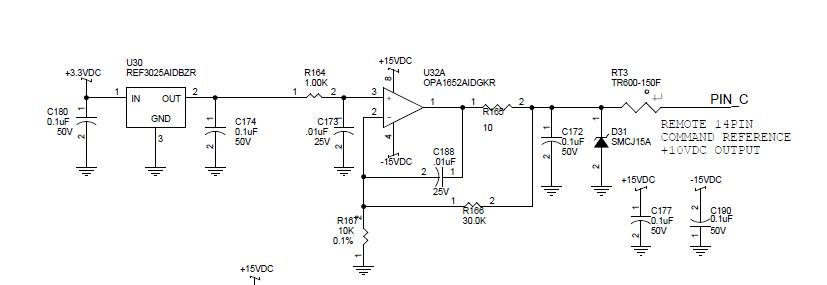Hello,
Our customer is trying to replace a LF347 operational amplifier with the OPA1652.
Circuit implementation < below >.
The circuit output labeled as PIN_C is an external connection point to the product.
This PIN_C is part of an external cable assembly so testing is done to evaluate shorted wires.
The specific test step was when the 24VAC source was shorted to the PIN_C connection.
I see in the datasheet absolute maximum rating “Input Current (All pins except power-supply pins) +/- 10mA
Customer does not think they can increase the resistance enough to limit to only 10mA into the OUT pin.
The OPA4172 has also been discussed for a replacement to the LF347.
In its datasheet it states only for “Signal Input Terminals” Current +/-10mA.
Nothing stated about the output pin.
The LF347 doesn’t even spec this.
Here is a link to the http://www.ti.com/product/lf347
? Would you have some suggestions on how to fix this?
? Or would you have a 36V, high output current drive opamp they could consider?
Thank you, Keith


